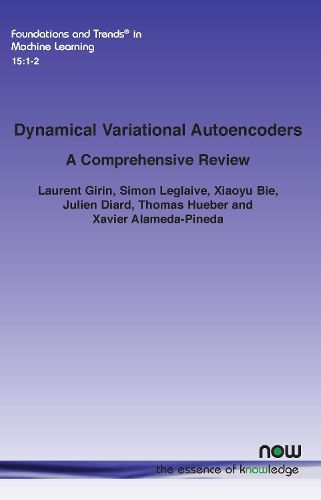Readings Newsletter
Become a Readings Member to make your shopping experience even easier.
Sign in or sign up for free!
You’re not far away from qualifying for FREE standard shipping within Australia
You’ve qualified for FREE standard shipping within Australia
The cart is loading…






This title is printed to order. This book may have been self-published. If so, we cannot guarantee the quality of the content. In the main most books will have gone through the editing process however some may not. We therefore suggest that you be aware of this before ordering this book. If in doubt check either the author or publisher’s details as we are unable to accept any returns unless they are faulty. Please contact us if you have any questions.
Variational autoencoders (VAEs) are powerful deep generative models widely used to represent high-dimensional complex data through a low-dimensional latent space learned in an unsupervised manner. In this monograph the authors introduce and discuss a general class of models, called dynamical variational autoencoders (DVAEs), which extend VAEs to model temporal vector sequences. In doing so the authors provide:* a formal definition of the general class of DVAEs* a detailed and complete technical description of seven DVAE models* a rapid overview of other DVAE models presented in the recent literature* discussion of the recent developments in DVAEs in relation to the history and technical background of the classical models DVAEs are built on* a quantitative benchmark of the selected DVAE models* a discussion to put the DVAE class of models into perspectiveThis monograph is a comprehensive review of the current state-of-the-art in DVAEs. It gives the reader an accessible summary of the technical aspects of the different DVAE models, their connections with classicalmodels, their cross-connections, and their unification in the DVAE class in a concise, easy-to-read book.The authors have put considerable effort into unifying the terminology and notation used across the various models which all students, researchers and practitioners working in machine learning will find an invaluable resource.
$9.00 standard shipping within Australia
FREE standard shipping within Australia for orders over $100.00
Express & International shipping calculated at checkout
This title is printed to order. This book may have been self-published. If so, we cannot guarantee the quality of the content. In the main most books will have gone through the editing process however some may not. We therefore suggest that you be aware of this before ordering this book. If in doubt check either the author or publisher’s details as we are unable to accept any returns unless they are faulty. Please contact us if you have any questions.
Variational autoencoders (VAEs) are powerful deep generative models widely used to represent high-dimensional complex data through a low-dimensional latent space learned in an unsupervised manner. In this monograph the authors introduce and discuss a general class of models, called dynamical variational autoencoders (DVAEs), which extend VAEs to model temporal vector sequences. In doing so the authors provide:* a formal definition of the general class of DVAEs* a detailed and complete technical description of seven DVAE models* a rapid overview of other DVAE models presented in the recent literature* discussion of the recent developments in DVAEs in relation to the history and technical background of the classical models DVAEs are built on* a quantitative benchmark of the selected DVAE models* a discussion to put the DVAE class of models into perspectiveThis monograph is a comprehensive review of the current state-of-the-art in DVAEs. It gives the reader an accessible summary of the technical aspects of the different DVAE models, their connections with classicalmodels, their cross-connections, and their unification in the DVAE class in a concise, easy-to-read book.The authors have put considerable effort into unifying the terminology and notation used across the various models which all students, researchers and practitioners working in machine learning will find an invaluable resource.